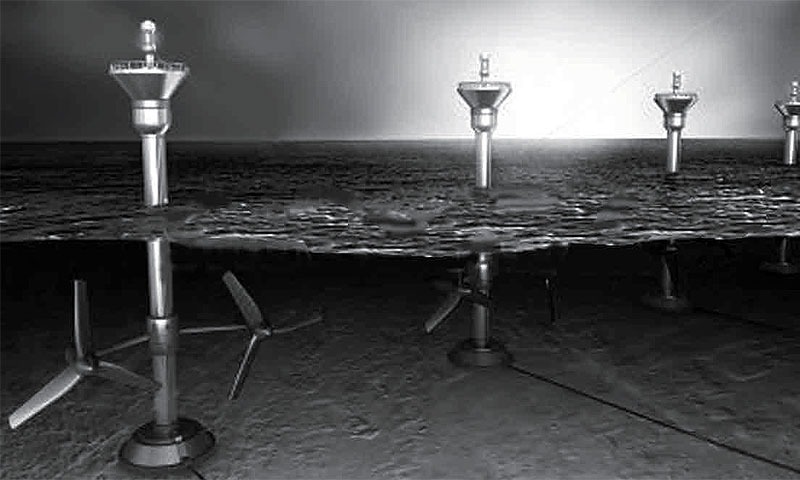ISLAMABAD: Pakistan has huge potential for generating tidal power due to its geographical location and lengthy coastline, WealthPK reports.
The country can control its energy crisis by generating fuel-free and low-cost tidal power. Pakistan has a 1,045-kilometre coastline, which is ideal for producing tidal energy due to its favourable characteristics.
Ocean tidal resources are denser and more reliable than others for generating power at a low cost. However, suitable technological solutions to harassing tidal power can be crucial for generating cheaper electricity.
Dr Syed Abid Ali, Technical Adviser at the Pakistan Institute of Oceanography (NIO), told WealthPK that authorities could utilise the mechanical energy of the ocean for generating power. Ocean mechanical energy can be harnessed in the two forms of potential and kinetic. The structure to harness the potential power of moving tidal waters is based on a barrage system. For kinetic energy, the current velocity of tides is utilised.
He said that the tidal regime on the coast of Pakistan had two high tides and two low tides every 24 hours and 50 minutes. One tidal cycle completes after two waves of six hours and 25 minutes each.
“Tidal barrages energy generating system can produce electricity from tidal barrages through the ebb generation and two-way generation. Tides are classified as ebb and flood. The ebb tide is the seaward tidal flow from high water to low. Flood tide is the landward tidal flow from low water to high,” said Dr Abid Ali.
In an ebb generation, incoming tidal flow is stored in the reservoir and released back through gates to drive the turbines. In two-way energy generation, the same procedure is followed but the flood is also utilised for driving turbines.
The expert said that the barrage-based tidal power plant had a significant capital cost and would take considerable time to complete. It is similar to a hydropower station but has various benefits, such as requiring fewer head of barrages than a conventional hydropower plant.
“On the other hand, Pakistan’s coastal areas are characterised by high tide currents, which carry a lot of kinetic energy,” he said. It is possible to convert this energy into electricity by using underwater sea turbines. Using underwater sea turbines means to utilise the kinetic energy of flowing tides to power the tidal plant.
Dr Abid Ali said that the tidal stream power plant worked best at creeks, rocky shores and narrow heads with high-velocity tidal currents. The technology is proving successful as all the features are built in a single unit. This technology is one of the recent ones to be developed. Research work for initiating pilot projects is also needed to be carried out.
“Compared to tidal barrage systems, this plant is easier to install and less expensive to construct,” he told WealthPK.
According to the National Institute of Oceanography (NIO) and Pakistan Navy Hydrographic Department, the tidal velocities in the Indus deltaic region are between 2.5 and 3.0 metres/second. The tidal range around these creeks is between two and four metres, respectively. There is a potential for harnessing renewable energy from coastal waves and tides in Pakistan’s inshore and offshore areas.
The Sindh coast is a complex creek network located 170 kilometres away from the Indus deltaic area. The flood and ebb of tides in and out of these creeks have a high velocity of 0.2 to 0.5 meters/second.
NIO Pakistan has conducted preliminary feasibility surveys for energy extraction from the Indus deltaic creek system. About 17 significant creeks can produce an estimated energy of 1,100 megawatts. The seawater in these areas ingresses inland up to 80 kilometres at some places due to the tidal fluctuation, which is favourable for energy extraction, according to the information gathered by WealthPK.





